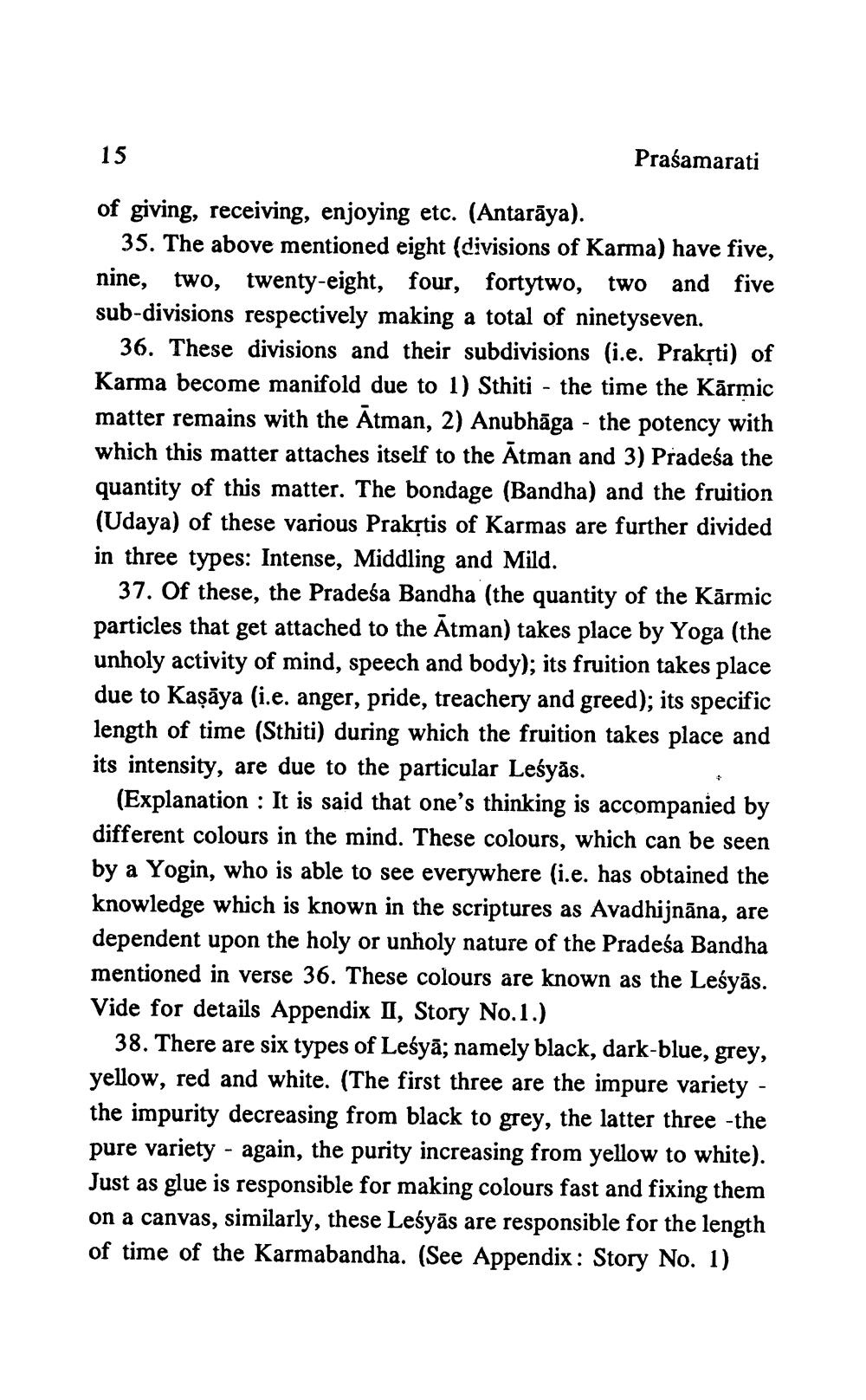________________
15
Praśamarati
of giving, receiving, enjoying etc. (Antarāya).
35. The above mentioned eight (divisions of Karma) have five, nine, two, twenty-eight, four, fortytwo, two and five sub-divisions respectively making a total of ninetyseven.
36. These divisions and their subdivisions (i.e. Prakrti) of Karma become manifold due to 1) Sthiti - the time the Kārmic matter remains with the Atman, 2) Anubhāga - the potency with which this matter attaches itself to the Atman and 3) Pradeśa the quantity of this matter. The bondage (Bandha) and the fruition (Udaya) of these various Prakstis of Karmas are further divided in three types: Intense, Middling and Mild.
37. Of these, the Pradeśa Bandha (the quantity of the Kārmic particles that get attached to the Atman) takes place by Yoga (the unholy activity of mind, speech and body); its fruition takes place due to Kaşāya (i.e. anger, pride, treachery and greed); its specific length of time (Sthiti) during which the fruition takes place and its intensity, are due to the particular Leśyās.
(Explanation : It is said that one's thinking is accompanied by different colours in the mind. These colours, which can be seen by a Yogin, who is able to see everywhere (i.e. has obtained the knowledge which is known in the scriptures as Avadhijnāna, are dependent upon the holy or unholy nature of the Pradeśa Bandha mentioned in verse 36. These colours are known as the Leśyās. Vide for details Appendix II, Story No.1.)
38. There are six types of Leśyā; namely black, dark-blue, grey, yellow, red and white. (The first three are the impure variety - the impurity decreasing from black to grey, the latter three - the pure variety - again, the purity increasing from yellow to white). Just as glue is responsible for making colours fast and fixing them on a canvas, similarly, these Leśyās are responsible for the length of time of the Karmabandha. (See Appendix: Story No. 1)




